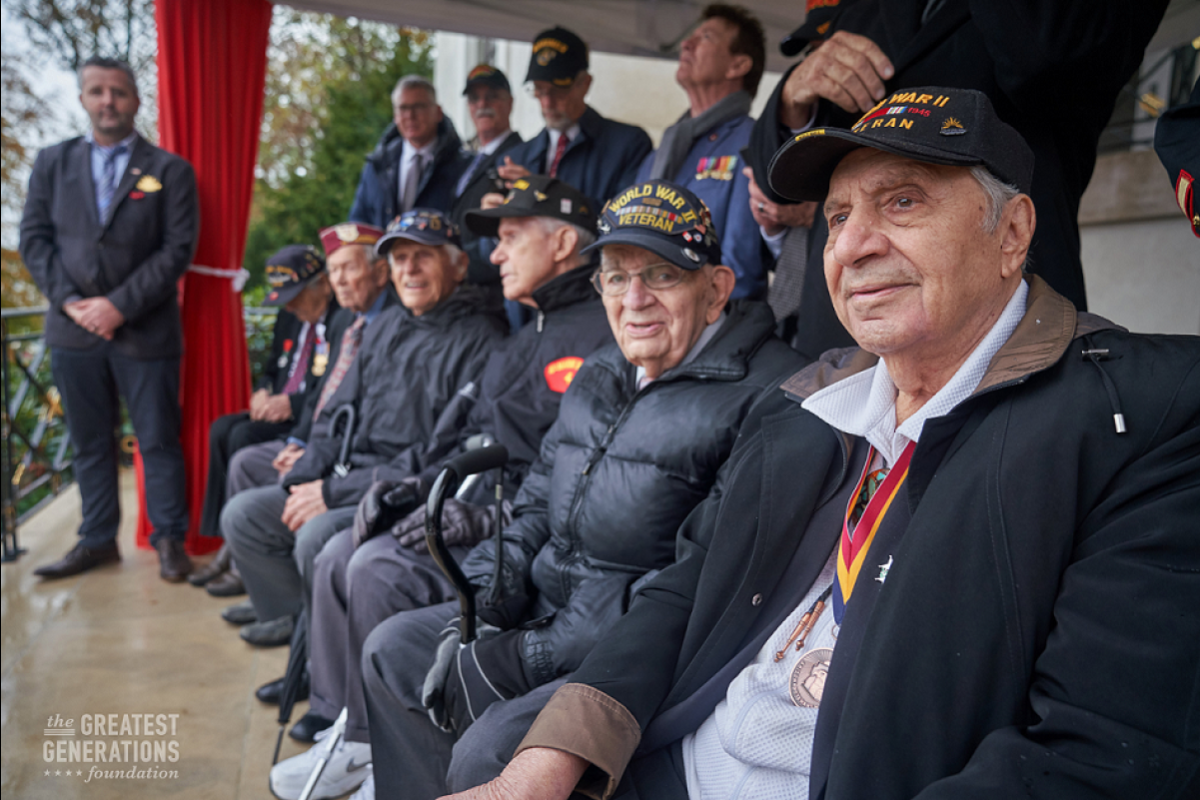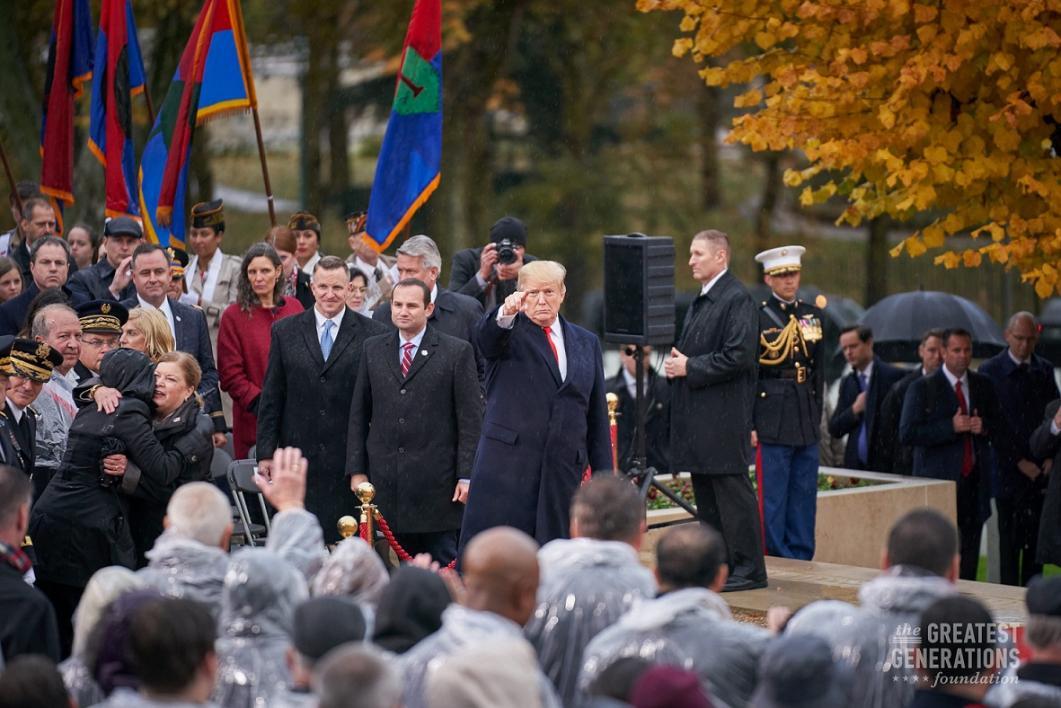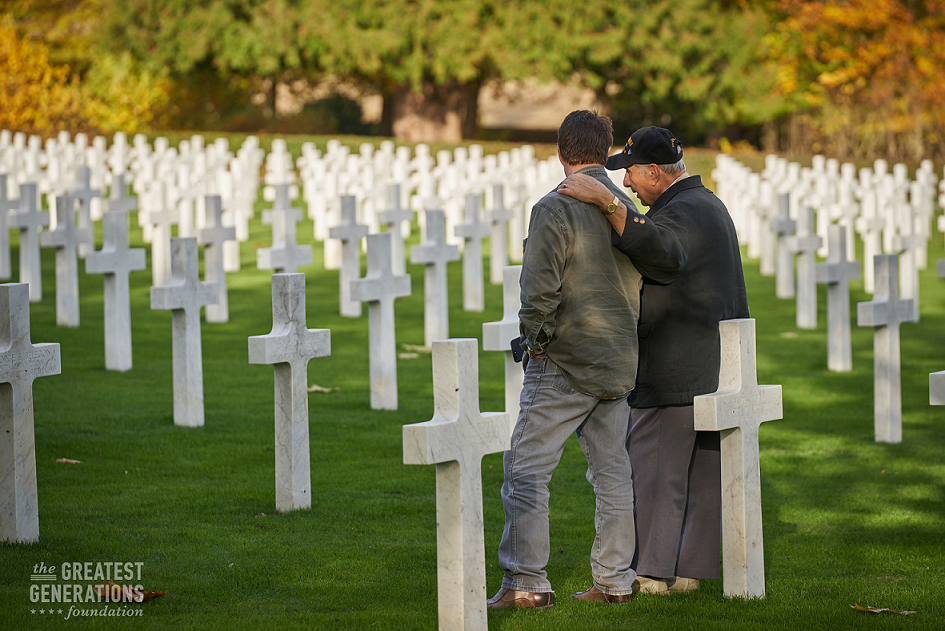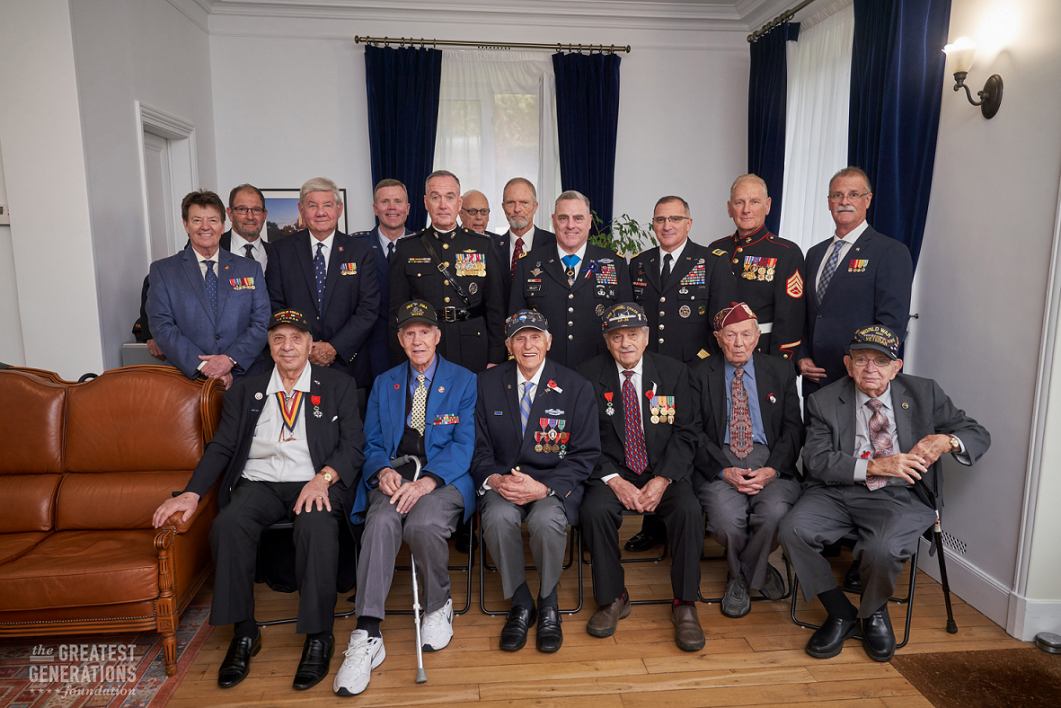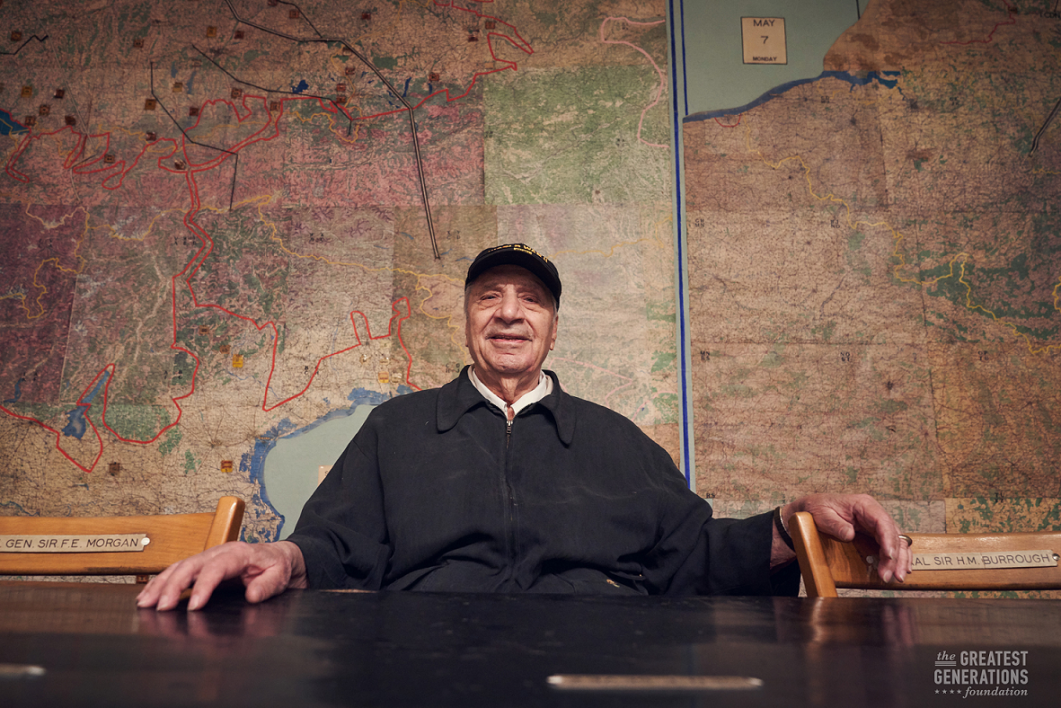ASU benefactor Gregory Melikian attends Armistice Day in France to commemorate end of World War I

Gregory Melikian in Reims, France. Photo Credit: John Riedy Photography/The Greatest Generations Foundation
Gregory Melikian feels strongly that communication is a key component for U.S relations overseas.
He should know, because as a young sergeant in WWII, he was chosen to communicate a message that changed the world. The Germans had surrendered. The war in Europe was over.
Melikian, the namesake and longtime benefactor of Arizona State University's Melikian Center for Russian, Eurasian and East European Studies was working as a telegraph radio operator in Reims, France, under Gen. Dwight D. Eisenhower and the Allied Powers when he was asked to send the message to all Allied command centers.
It read: “A representative of the German High Command signed the unconditional surrender of all German land, sea and air forces in Europe to the Allied Expeditionary Force, and simultaneously to the Soviet High Command at 0141 Hours, Central European Time, 7 May 1945, under which all forces will cease active operations at 0001B Hours, 9 May."
Melikian, then age 20, was chosen because he was the youngest radio operator on duty when the Germans had signed the papers of surrender. The generals wanted him to tell the story for the rest of his life.
And he has been doing so ever since.
At age 94, Melikian recently returned to France to mark the occasion of the ending of another war. He was invited, along with five other U.S. WWII veterans and six Vietnam veterans, to join U.S. dignitaries in France to commemorate the 100th anniversary of the armistice that ended World War I on Nov. 11, 1918.
A highlight of the trip for Melikian was visiting the Ecole Professionelle, a co-educational technical school 90 miles northeast of Paris. It served as the Allied headquarters in Reims where Melikian worked during World War II. It was also the site where the Germans surrendered. The Germans had used the building as supreme headquarters during their occupation and Eisenhower made it his supreme headquarters since moving from Versailles several months prior.
Today the small school is still open, and left-hand side of the building features a small museum where the historic signing took place. Melikian was invited to sit at the table. Fifteen chairs are still arranged around it, the majority for the Allied dignitaries, and three for the Germans. Campaign maps still cover the walls, showing the state of play in Germany, Burma and the Philippines. The room today is preserved behind glass.
The building outside is marked by the flags of the United States, Great Britain, Russia and France. Written onto the wall are the words, “C’est ici que le 7 mai 1945, a ete signe l’acte qui mit fin a la deuxieme guerre mondiale en Europe.” which translates to, “It is here that on 7 May 1945, was signed the act that ended the Second World War in Europe.”
In another ceremony, Melikian and the veterans were at the Suresnes American Cemetery and Memorial just outside of Paris, where President Donald Trump paid tribute to the U.S. and Allied soldiers killed in World War I. During his remarks, President Trump called out to the six U.S. veterans from World War II in attendance, including Melikian, thanking them personally for their service.
In addition to his service in WWII, Melikian served as honorary commander of the 56th Fighter Wing and 944th Fighter Wing of the Air Force Reserve at Luke Air Force Base in Arizona, from which he is now retired.
In 2012, for his unique role as “The Man Who Ended WWII” in Europe, Melikian was inducted and bestowed as chevalier, or knight, into the French Legion of Honor.
Today, Melikian is quite proud of the center that bears his name. He boasts of the fact that hundreds of ROTC students study languages alongside civilians in the Center's Critical Language Institute, allowing them to speak to the local populations in areas of their deployment, including Pashto in the north of Afghanistan and Uzbek in the south. He deeply believes that the ability to speak a foreign language is highly beneficial for military personnel. Not only does it allow soldiers to socialize with local communities where they are deployed in peacekeeping operations, but it’s also been proven that the support of the local population is vital to ensure the success of a military campaign.
Because of the importance of World War II, the war that changed the world, ASU and the National World War II museum will launch of a new online master’s degree program, World War II studies, beginning in January 2019. The fully accredited online Master of Arts degree will provide 30 hours of coursework taught by the world's top WWII scholars from both ASU and the National World War II Museum. The deadline for applications is Dec. 1, 2018.
More Arts, humanities and education

ASU professor's project helps students learn complex topics
One of Arizona State University’s top professors is using her signature research project to improve how college students learn…

Award-winning playwright shares her scriptwriting process with ASU students
Actions speak louder than words. That’s why award-winning playwright Y York is workshopping her latest play, "Becoming…

Exceeding great expectations in downtown Mesa
Anyone visiting downtown Mesa over the past couple of years has a lot to rave about: The bevy of restaurants, unique local shops…


